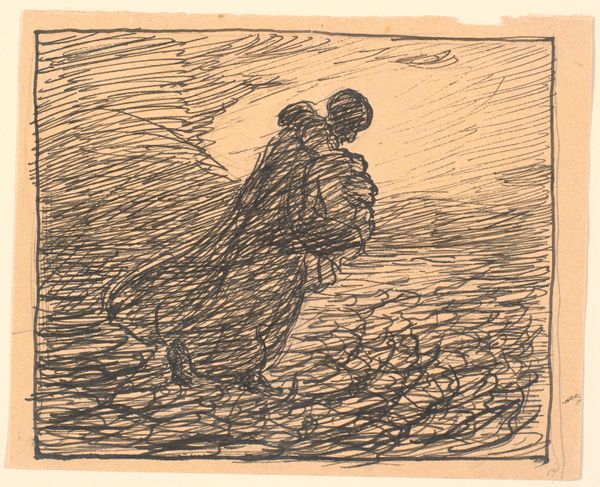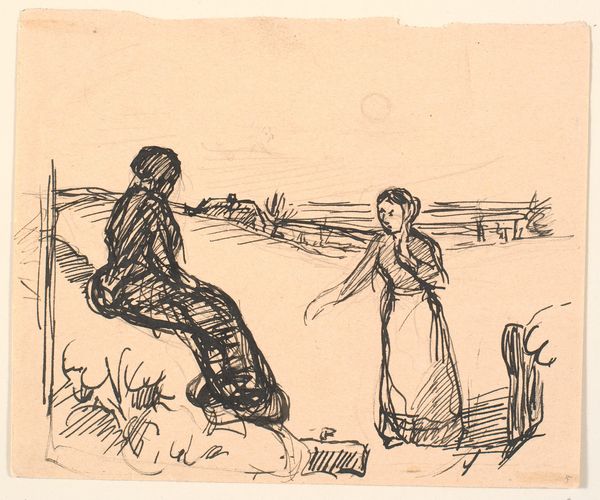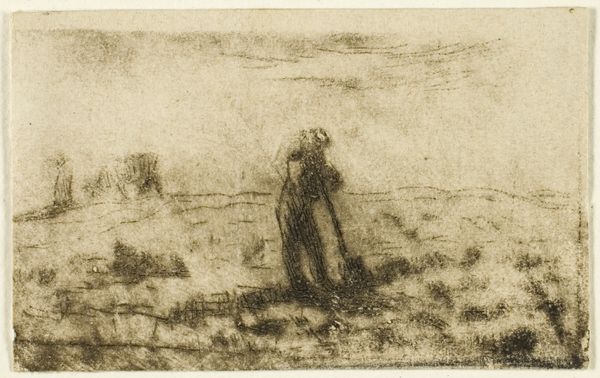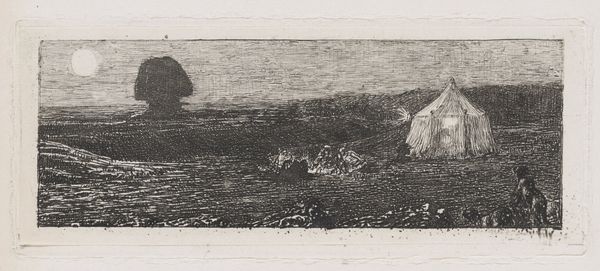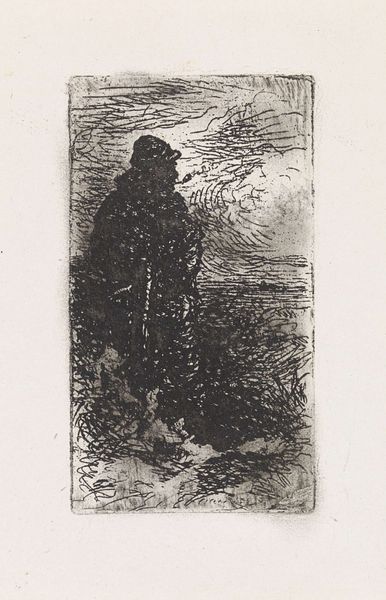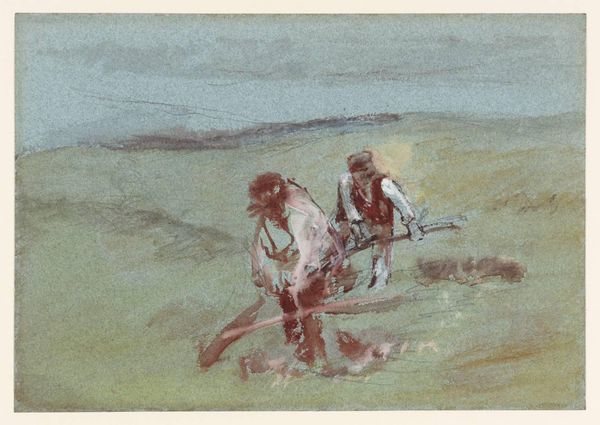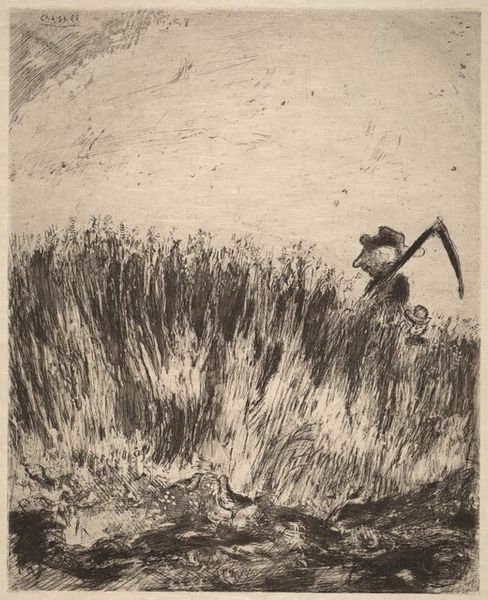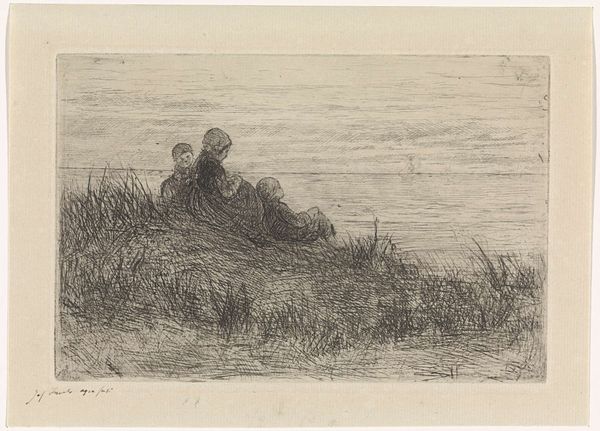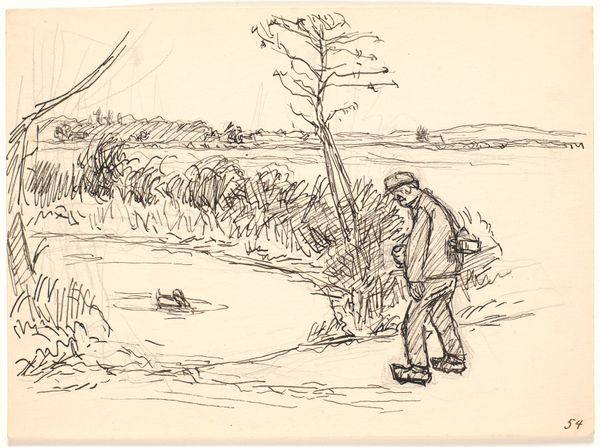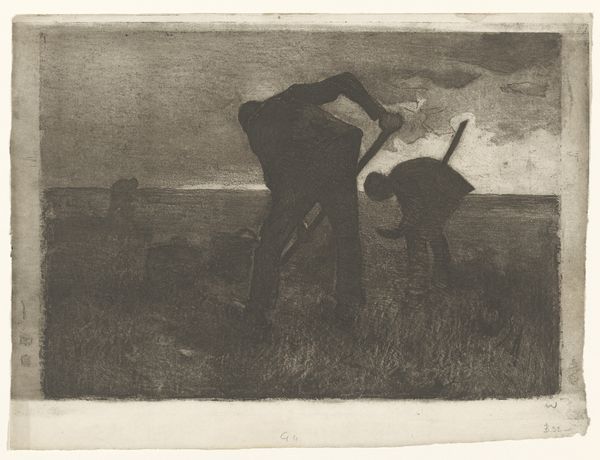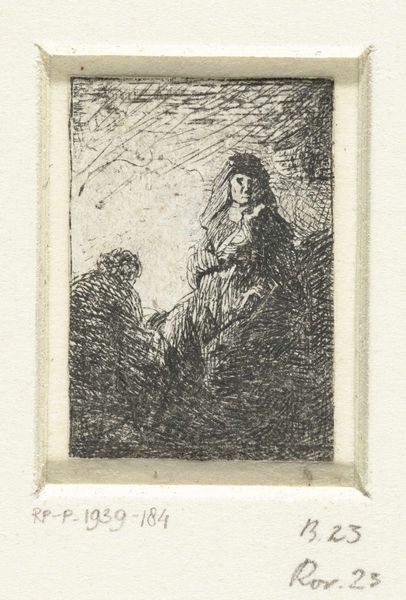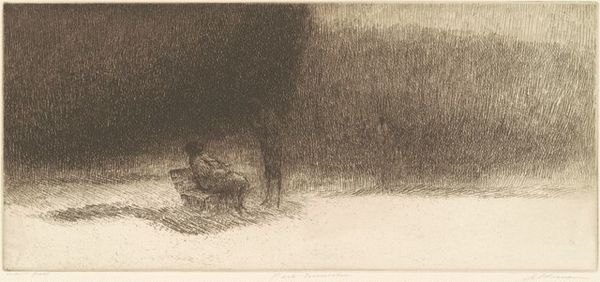
To ryttere, der rider op fra havet. Illustrationsudkast 1869 - 1873
0:00
0:00
Dimensions: 76 mm (height) x 136 mm (width) (bladmaal)
Curator: Lorenz Frølich’s “Two Riders Emerging from the Sea,” sketched between 1869 and 1873, it’s all brooding atmosphere. Look at how the ink pulls you into that churned seascape! Editor: My first thought? Urgency. The quick strokes, the contrast... it screams “get out now.” You can almost taste the salt and feel the dread of that storm brewing. What paper and ink did Frølich select, and where were they sourced from at the time? Curator: I love how you jumped straight to the materials. Considering its place among his illustration drafts, the very means – a simple drawing rendered with ink – mirrors the urgency of storytelling itself. It feels elemental, as though he snatched the image straight from his imagination, onto paper, by whatever means were at hand. Editor: Exactly! That elemental quality you describe makes me think about the paper-making of that era: fibers pulped from rags, the human labor, maybe even sourced locally. The drawing wasn't just created; it was *made*. What about the broader social context? Were such drawings primarily for an elite audience or part of a wider distribution network via printed media? Curator: That's where it gets even more interesting! Frølich was a master of historical and mythological scenes, so it connects to a larger 19th-century appetite for tales of heroism and drama. Consider, too, how romanticism seized upon the stark power of nature… that threatening sky isn't just background, it is active; it’s part of the whole mood. Editor: Right. I guess I want to understand better how his access to these tools shapes the narrative, literally, by highlighting those economic and material relationships. Was this accessible to a wider range of social classes through books? Curator: Maybe the accessibility lies in its rawness. I mean, Frølich’s skillful strokes could transport anyone into that story; and maybe that is the truest tool, his vision... But the point is well-made! Editor: Agreed! It really enriches how we interpret "high art" – it’s not separate from craft or labor history. The means *are* a huge part of the message, aren't they? Curator: Indeed, and recognizing that reminds us the magic lives in both intention and outcome.
Comments
No comments
Be the first to comment and join the conversation on the ultimate creative platform.
